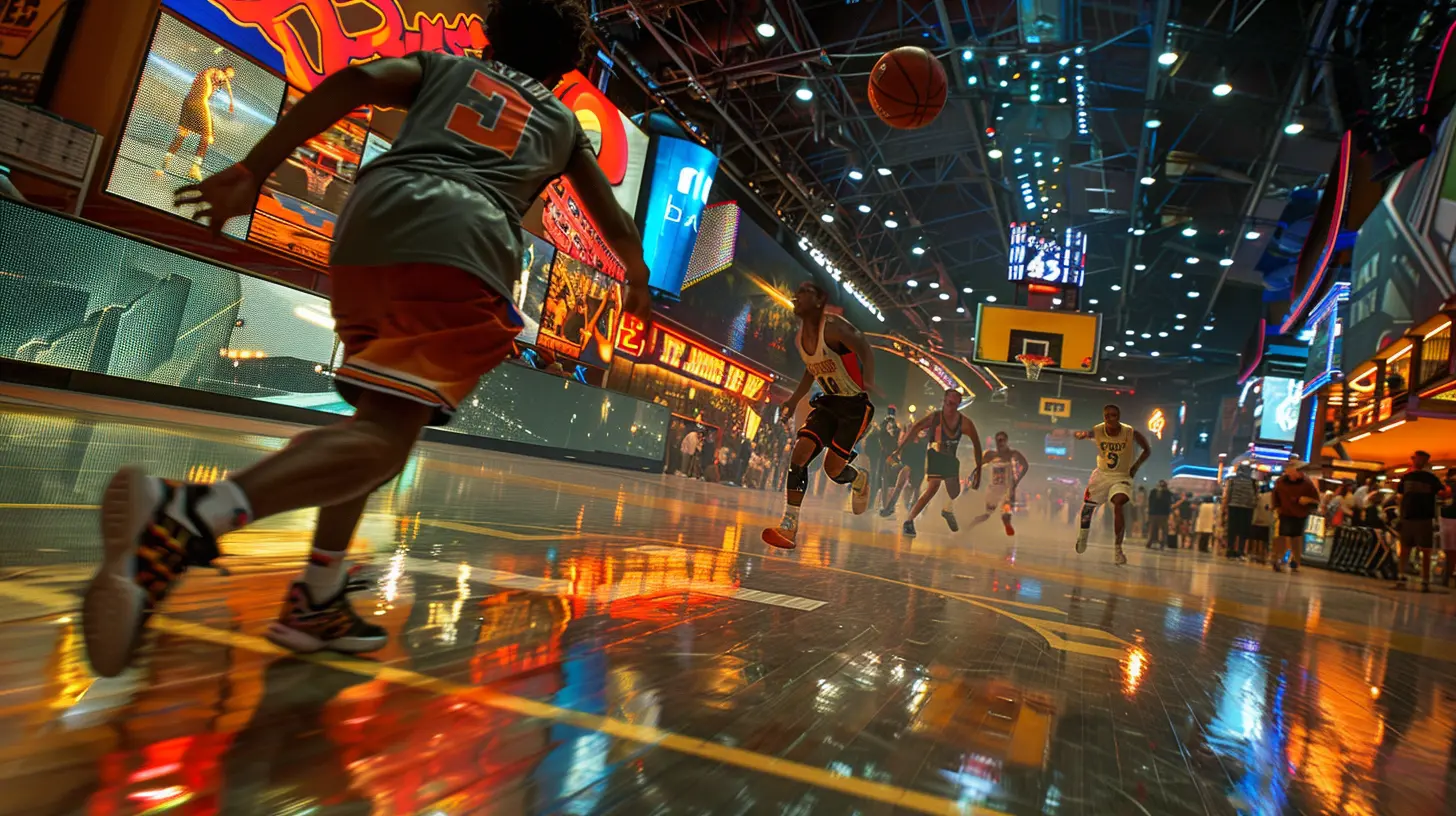How Motion Controls Are Enhancing Sports Video Games
27 September 2025
Imagine swinging your arm like a tennis racket and seeing your on-screen character perform that perfect backhand — all in real-time. Sounds like magic, right? Well, welcome to the world of motion controls in sports video games. We're not just pushing buttons anymore; we're stepping into the action.
Motion controls have been quietly revolutionizing how we play sports games for the last decade. From Wii Sports making grandma a bowling champ to VR systems turning your living room into a boxing ring — motion-based gaming isn't just a gimmick anymore. It's becoming the heartbeat of an entirely new gaming experience.
So, how are motion controls changing the game? And why should you (even as a casual gamer) care? Let’s dive into this dynamic shift and see how our bodies and our games are becoming more connected than ever before.
The Evolution of Sports Gaming: From Thumbsticks to Full-Body Gameplay
Before we had motion controls, sports games were all about timing your button presses and mastering thumbstick combos. You weren’t playing golf — you were calculating swing meters. It was fun, sure, but also a bit… disconnected.Enter motion controls.
When the Nintendo Wii dropped in 2006, it flipped everything upside down. Suddenly, you weren’t just controlling an athlete — you were one. A simple flick of the wrist, a swing of the arm, or a twist of the body became the inputs.
Ever play Wii Tennis or Wii Bowling at a party? Then you know the magic.
That moment sparked something — a realization that sports games could be more physical, more immersive, and just plain more fun. From that point on, motion control tech began creeping into platforms like PS Move, Xbox Kinect, and now, VR systems like the Meta Quest and PlayStation VR.
Why Motion Controls Feel So… Right
You can learn the button layout of a football game in a weekend. But do you know what’s way easier? Actually kicking. Or punching. Or swinging.Motion controls tap into something primal. Our bodies already know how to move. Developers use that natural instinct to create games that “feel” more real. That’s the magic sauce.
It’s All About Immersion
When you throw a punch and your avatar mimics it precisely on screen, there's no gap between the player and the game. It almost feels like you're there. That’s not immersion like using a controller — that's embodiment. And it’s powerful.Take VR boxing games like Thrill of the Fight or Creed: Rise to Glory. You’re not just mashing buttons to throw jabs — you're ducking, weaving, and throwing actual punches. Your whole body becomes your controller.
Better Feedback = Better Skill Building
In traditional games, you make the same motion over and over until you "get it." With motion controls, you're building muscle memory. You don’t just learn the game — you feel it.That’s especially true in golf and tennis games. Where direction, strength, and rhythm matter. One slight twist of your wrist? And boom — that’s a slice.
Breaking the Fourth Wall: Games That Shine With Motion Controls
It’s one thing to talk about how cool motion controls are. Let’s get specific. There are some standout titles that take the tech and run with it — literally.Wii Sports & Wii Sports Resort
We can’t talk motion controls without tipping our hat to the OG: Wii Sports. It wasn’t just a launch title — it was a cultural reset. Everyone from little kids to nursing home residents got in on the action.Wii Sports Resort took it even further by refining motion precision with the Wii MotionPlus. Suddenly, sword-fighting duels and ping pong rallies were butter smooth.
EA Sports Active & Ring Fit Adventure
Who said gaming can’t be a workout? With titles like EA Sports Active and Ring Fit Adventure, motion controls double as fitness tools. You jump, squat, lunge, and actually sweat.Games like these blur the line between gaming and working out — and honestly, that’s a line we’re happy to cross.
VR Heavyweights: Creed, Eleven Table Tennis & more
Virtual Reality is where motion controls get supercharged. Think of games like Eleven Table Tennis, which feels eerily like the real thing — down to the muscle memory. Or Creed, where you’ll dodge jabs and counter punches so hard, your Fitbit will think you ran a mile.
How Motion Controls Are Changing Competitive Play (Yes, Even Esports)
Now, you might be thinking: "Isn’t all this just for fun?" Not anymore.Motion controls are beginning to carve out a place in competitive gaming. We're seeing fitness-based games pop up within the burgeoning world of exergaming — a mashup of exercise and gaming. And with VR esports growing each year, motion-controlled titles are taking the spotlight.
Think about this: competitive Beat Saber tournaments. VR fencing duels. Reflex-based table tennis showdowns. Motion controls are creating physical esports. Where skill isn't just in your thumbs — it's in your whole body.
Sure, it’s not on the same level as Call of Duty or League of Legends… yet. But it’s coming. And it could be the future.
Accessibility & Realism: The Double Win
One of the sneaky-awesome effects of motion controls? They’ve made sports games more accessible than ever.You don’t need to memorize dozens of combos or understand control schemes. You just need to move naturally. That opens doors for:
- Younger kids
- Seniors
- Casual players
- People with cognitive challenges
And let’s not forget about realism. In the past, hitting a baseball in a game felt like a lottery. With motion controls, you're stepping into the batter’s box. You’re swinging. You’re aiming. You’re feeling the impact.
That’s next-level stuff.
The Tech Behind The Magic
Let’s geek out for just a sec. How do motion controls even work?At the heart of it, we’ve got:
- Accelerometers: Measure movement speed
- Gyroscopes: Detect orientation and rotation
- Infrared sensors: Track position in space
- Cameras (e.g., Kinect, PS Camera): Map out your movements
- VR motion tracking: Uses external sensors, headsets, and controllers to monitor body position in 3D space
Mix all that together, and you’ve got a system that tracks not just where your hand is, but how fast it’s moving, at what angle, and with what force. That's how a gentle toss or a full swing can both register differently in-game.
Are There Drawbacks?
Let’s be real for a moment — it’s not all sunshine and six-packs.Room Space
Motion-controlled games need space. Your couch might be perfect for a traditional game, but swinging your arms like a maniac in a tiny studio apartment? Recipe for broken lamps.Accuracy Woes
Not all systems are created equal. Some games suffer from lag or poorly calibrated reads, turning your graceful golf swing into a janky flop shot.Physical Fatigue
Motion-controlled gaming is fun, but it can be exhausting. After a 30-minute VR boxing session, your arms feel like noodles. Great for fitness. Bad if you’re trying to game for hours.What’s Next for Motion Controls?
We’re just scratching the surface.With AI, haptic feedback, adaptive triggers, and full-body tracking suits on the rise, motion controls are only going to get freakier (in a good way). Imagine kicking a ball and feeling that exact feedback in your foot. Or wearing a glove that gives resistance when you “catch” a virtual baseball.
We've already got games in development that use eye-tracking, facial recognition, and even brainwave sensors. Combine that with motion? We’re looking at games you don’t just play — you live.
Final Thoughts
Motion controls aren’t just a neat trick or a fitness gimmick. They’re a massive leap forward in how we engage with sports video games. They bring us closer to the action, make gaming more inclusive, and open doors to new experiences we couldn't have imagined back when we were just mashing buttons.Whether you're dodging punches in VR or serving aces with a Wiimote, one thing’s for sure — you’re not just watching the game anymore.
You are the game.
all images in this post were generated using AI tools
Category:
Sports GamesAuthor:

Leandro Banks
Discussion
rate this article
1 comments
Sierra Henderson
Absolutely love how motion controls bring sports games to life! It’s like stepping onto the field from my living room. The immersive experience makes every goal, swing, and tackle feel so much more rewarding. Game on!
September 30, 2025 at 3:59 AM

Leandro Banks
Thank you! We're thrilled to hear how motion controls enhance your gaming experience and bring you closer to the action! Game on indeed!


